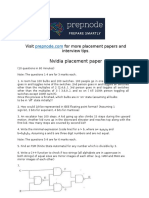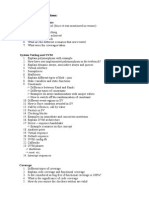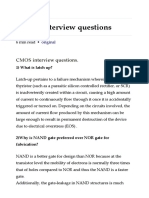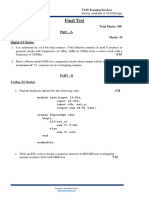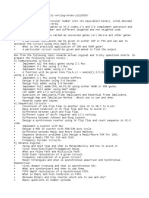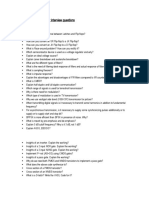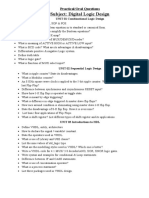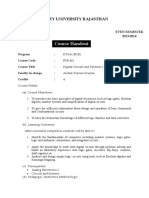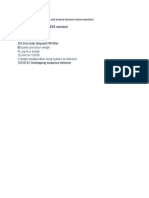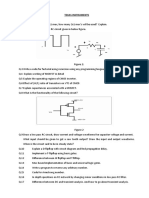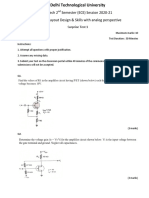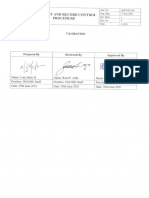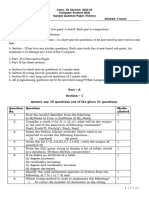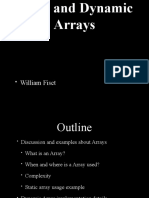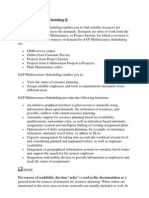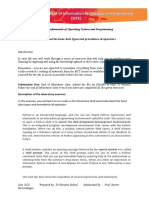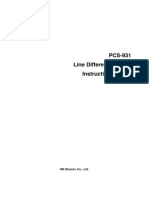100% found this document useful (1 vote)
1K views4 pagesRTL - Interview - Questions
The document provides an overview of topics that may be covered in a digital design or Verilog/VHDL interview. Some key points include:
1) Digital design topics such as number systems, logic gates, multiplexers, adders, decoders, counters, finite state machines, hazards, and timing analysis.
2) The difference between blocking and non-blocking assignments, transport and inertial delays, and tasks vs functions in Verilog/VHDL.
3) Coding guidelines for register transfer level design and differences between Verilog and VHDL such as data types.
4) Modeling techniques in VHDL and features of Verilog like timescales and default parameters.
Uploaded by
shwetabhagatCopyright
© © All Rights Reserved
We take content rights seriously. If you suspect this is your content, claim it here.
Available Formats
Download as PDF, TXT or read online on Scribd
100% found this document useful (1 vote)
1K views4 pagesRTL - Interview - Questions
The document provides an overview of topics that may be covered in a digital design or Verilog/VHDL interview. Some key points include:
1) Digital design topics such as number systems, logic gates, multiplexers, adders, decoders, counters, finite state machines, hazards, and timing analysis.
2) The difference between blocking and non-blocking assignments, transport and inertial delays, and tasks vs functions in Verilog/VHDL.
3) Coding guidelines for register transfer level design and differences between Verilog and VHDL such as data types.
4) Modeling techniques in VHDL and features of Verilog like timescales and default parameters.
Uploaded by
shwetabhagatCopyright
© © All Rights Reserved
We take content rights seriously. If you suspect this is your content, claim it here.
Available Formats
Download as PDF, TXT or read online on Scribd
/ 4




